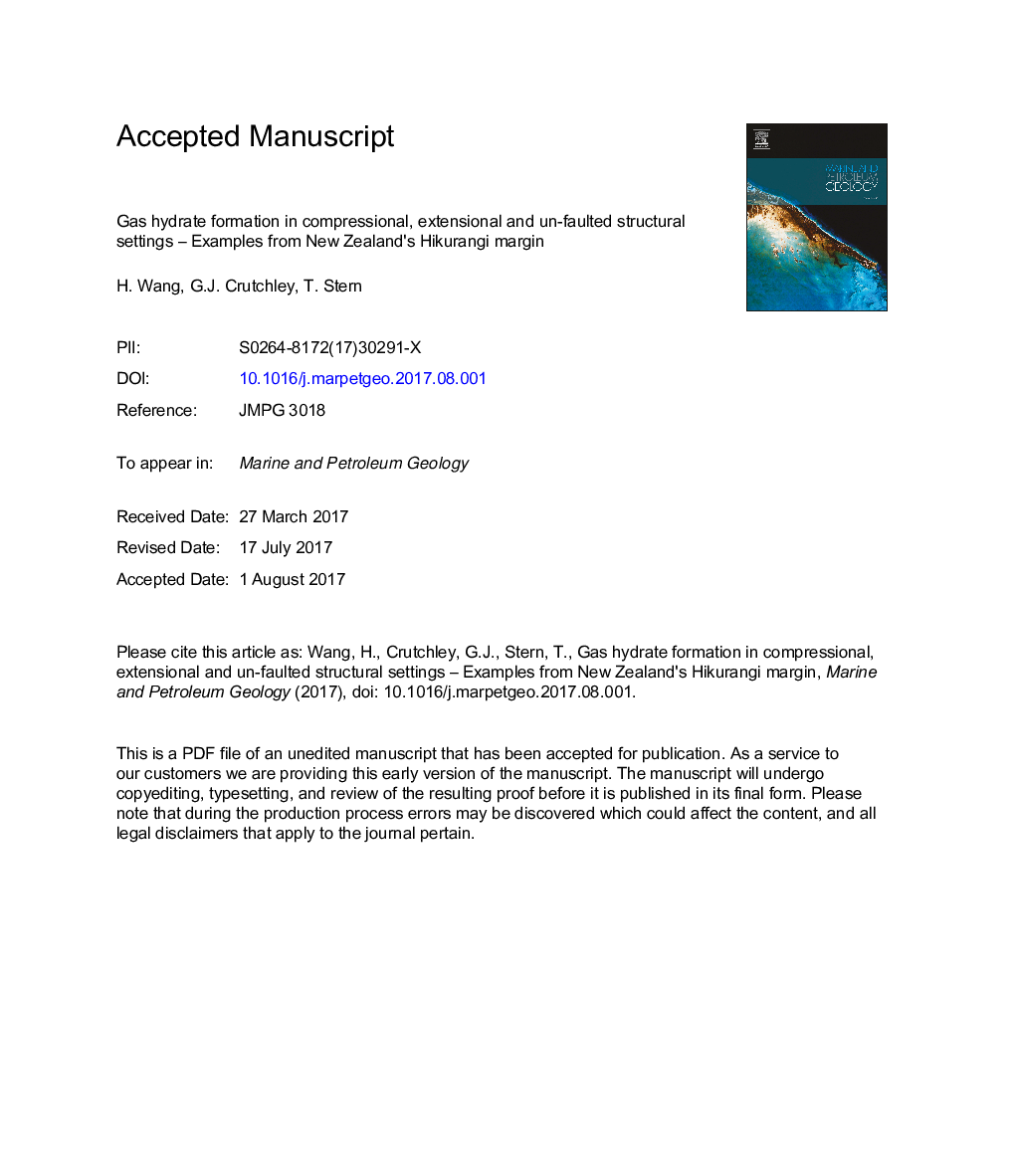| کد مقاله | کد نشریه | سال انتشار | مقاله انگلیسی | نسخه تمام متن |
|---|---|---|---|---|
| 5781911 | 1637139 | 2017 | 40 صفحه PDF | دانلود رایگان |
عنوان انگلیسی مقاله ISI
Gas hydrate formation in compressional, extensional and un-faulted structural settings - Examples from New Zealand's Hikurangi margin
دانلود مقاله + سفارش ترجمه
دانلود مقاله ISI انگلیسی
رایگان برای ایرانیان
کلمات کلیدی
موضوعات مرتبط
مهندسی و علوم پایه
علوم زمین و سیارات
زمین شناسی اقتصادی
پیش نمایش صفحه اول مقاله

چکیده انگلیسی
We investigate gas hydrate formation processes in compressional, extensional and un-faulted settings on New Zealand's Hikurangi margin using seismic reflection data. The compressional setting is characterized by a prominent subduction wedge thrust fault that terminates beneath the base of gas hydrate stability, as determined from a bottom-simulating reflection (BSR). The thrust is surrounded by steeply dipping strata that cross the BSR at a high angle. Above the BSR, these strata are associated with a high velocity anomaly that is likely indicative of relatively concentrated, and broadly distributed, gas hydrates. The un-faulted setting-sedimentary infill of a slope basin on the landward side of a prominent thrust ridge-is characterized by a strong BSR, a thick underlying free gas zone, and short positive polarity reflection segments that extend upward from the BSR. We interpret the short reflection segments as the manifestation of gas hydrates within relatively coarse-grained sediments. The extensional setting is a localized, shallow response to flexural bending of strata within an anticline. Gas has accumulated beneath the BSR in the apex of folding. A high-velocity zone directly above the BSR is probably mostly lithologically-derived, and only partly related to gas hydrates. Although each setting shows evidence for focused gas migration into the gas hydrate stability zone, we interpret that the compressional tectonic setting is most likely to contain concentrated gas hydrates over a broad region. Indeed, it is the only setting associated with a deep-reaching fault, meaning it is the most likely of the three settings to have thermogenic gas contributing to hydrate formation. Our results highlight the importance of anisotropic permeability in layered sediments and the role this plays in directing sub-surface fluid flow, and ultimately in the distribution of gas hydrate. Each of the three settings we describe would warrant further investigation in any future consideration of gas hydrates as an energy resource on the Hikurangi margin.
ناشر
Database: Elsevier - ScienceDirect (ساینس دایرکت)
Journal: Marine and Petroleum Geology - Volume 88, December 2017, Pages 69-80
Journal: Marine and Petroleum Geology - Volume 88, December 2017, Pages 69-80
نویسندگان
H. Wang, G.J. Crutchley, T. Stern,